By Dan Weisz
When I first composed this message two weeks ago, it looked as if I would have another owl family this spring in my backyard nest box. This would make it the fifth year in a row! The male Western Screech Owl spent much of the winter nearby and often in a neighbor’s porch pillar:
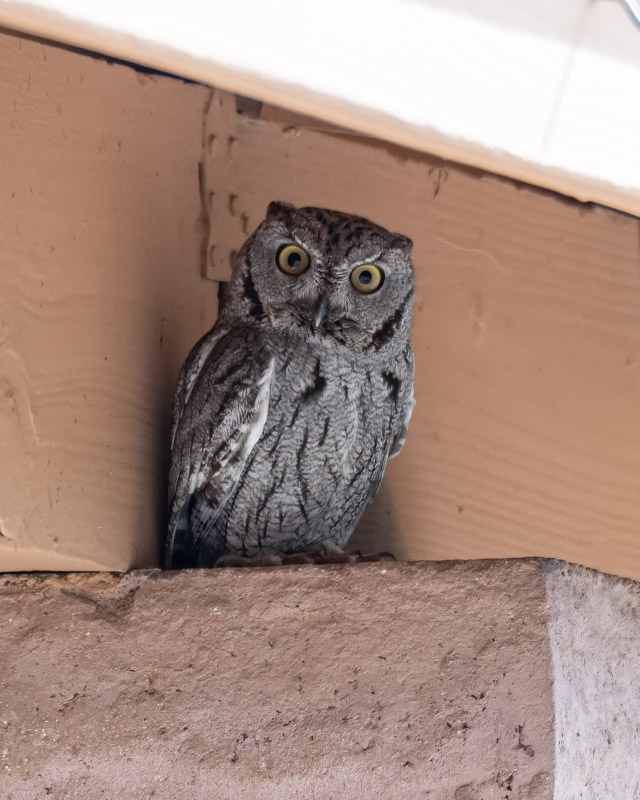
If I were to approach too closely, he would drop down into the cavity, raising his ear tufts to better break up his silhouette and “hide”. That works when he is in a thick tree but doesn’t really work as camouflage when he is sitting next to a patio roof.
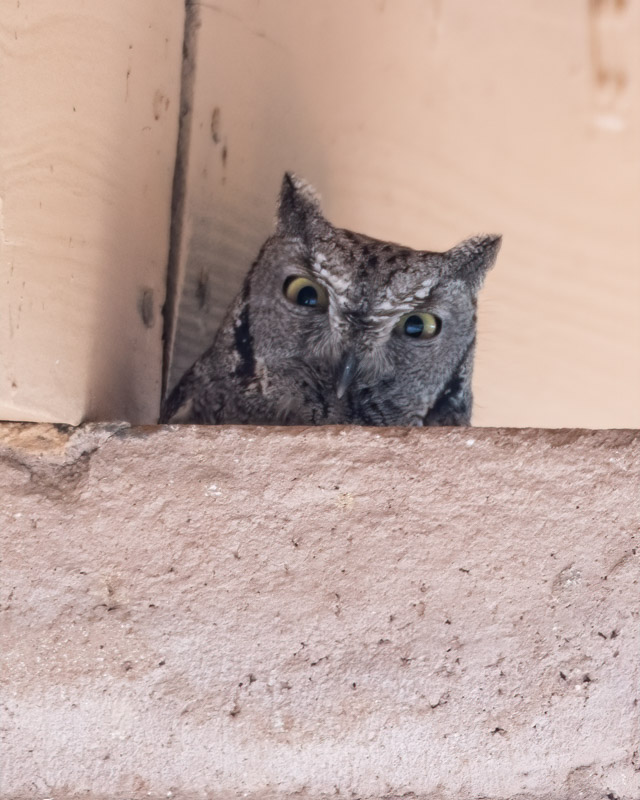
And a female Western Screech Owl was using the nest box at the same time, beginning in early March. This behavior suggested that there would be egg laying happening very soon.
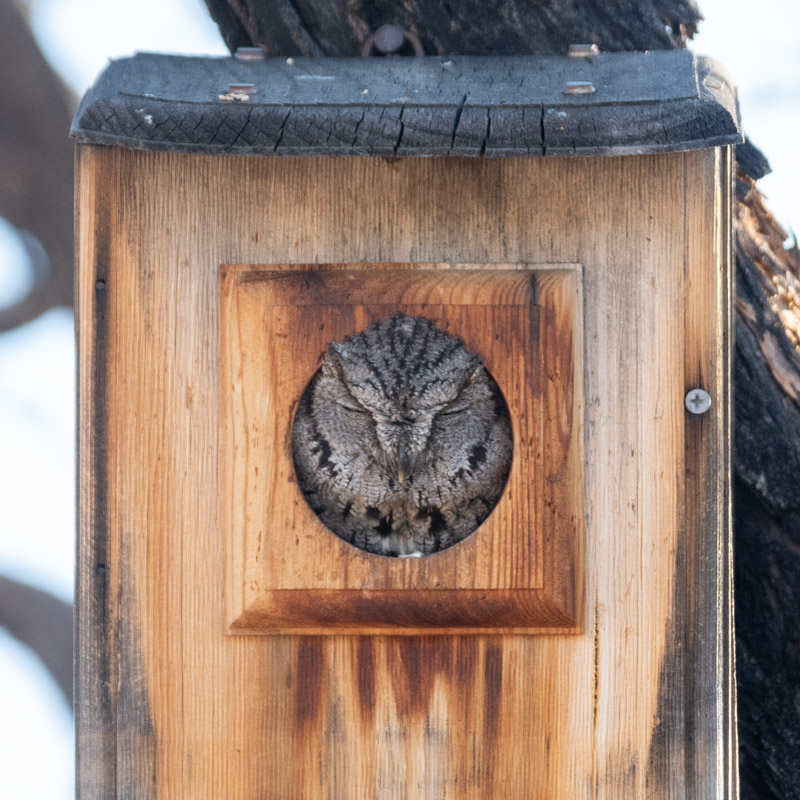
However, in the past three days, neither of the owls have made an appearance nor have I heard them. Something has occurred to change their behavior and make them move on. I will keep you posted as the season progresses!
In the meantime, a friend told me about a Western Screech Owl in a nearby desert wash. I have visited the owl several times now. This bird spends much of his day behind a tangle of small branches of a mesquite tree. I imagine the hole behind him also offers a safe roosting spot. Notice that the owl is perched on one leg and is holding his left foot up with the talons curled in a ball.
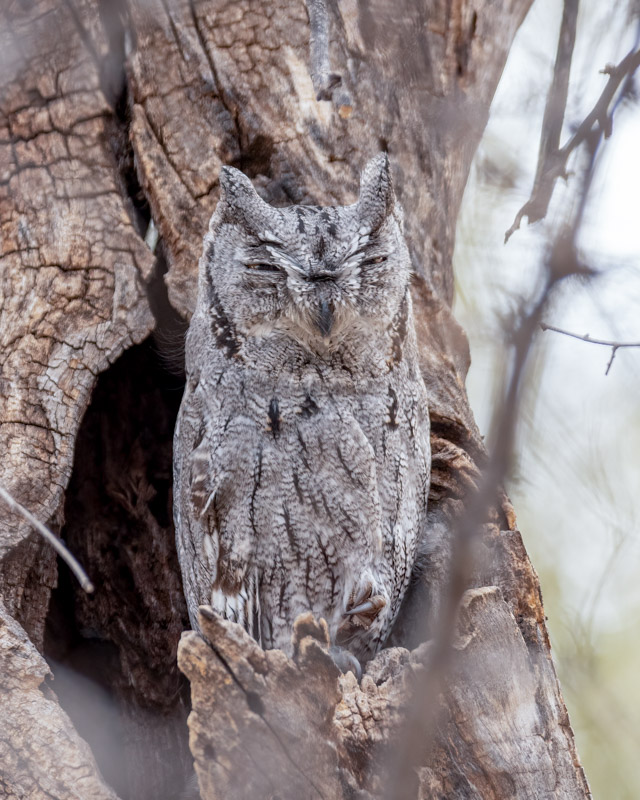
I took a photo from the side and a lower vantage point to avoid looking through twigs and small branches. The sleepy owl shows a very sharp beak and his ‘ear tufts’ or plumicorns look positively devilish and pointy!
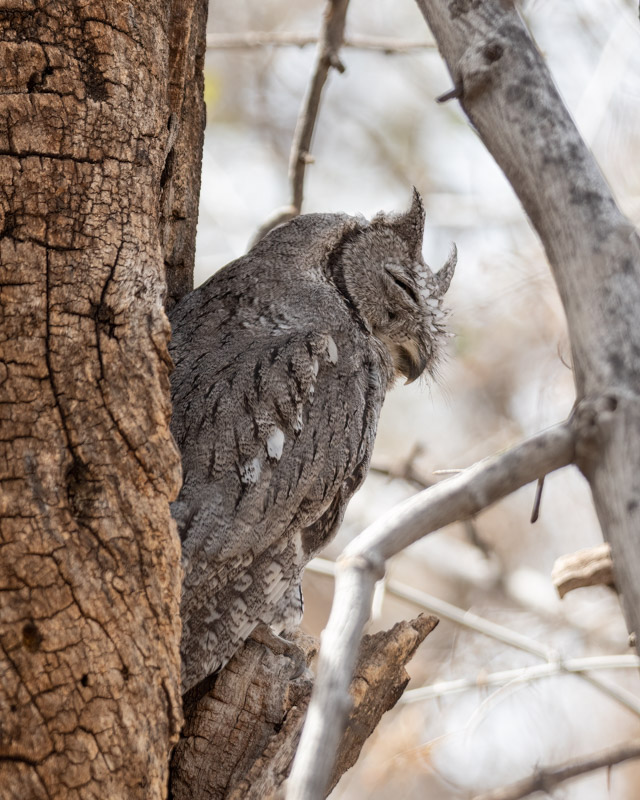
On a more recent visit, it was the first hot afternoon of the season. The Western Screech Owl was in his usual spot but he had his wing spread forward. It is likely he was spreading his wing to assist with heat dispersal. As the wind blows through the wing, it will cool him down. Notice the white squares/patterning on his wing feathers that were hidden in the photos above.
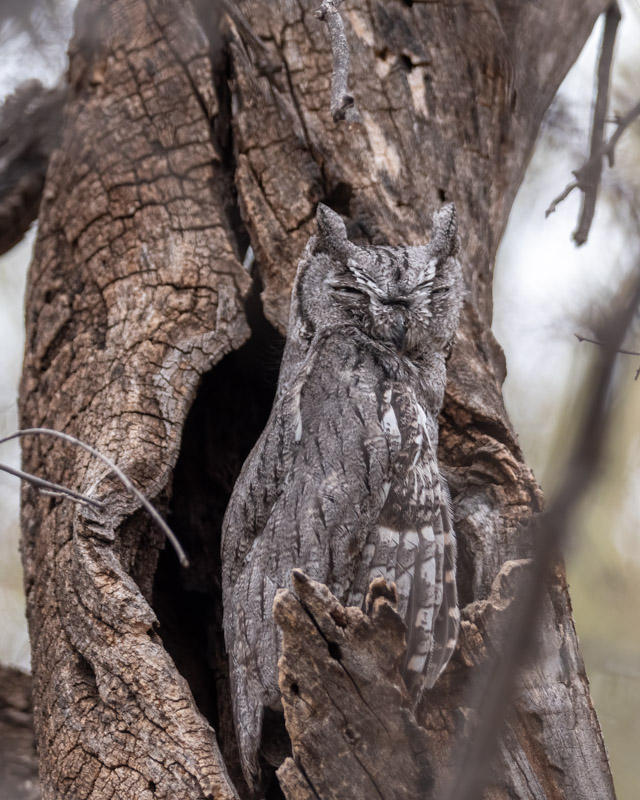
A close-up of the front edge of the wings shows a fascinating physical trait. Owls are known for flying silently. Their feathers have adapted to the need for silent flight and have whiskers or lashes (curved short feather shafts) along the leading edge. This helps to break up air turbulence at the edges of the wings to eliminate sound as the bird flies through the air.
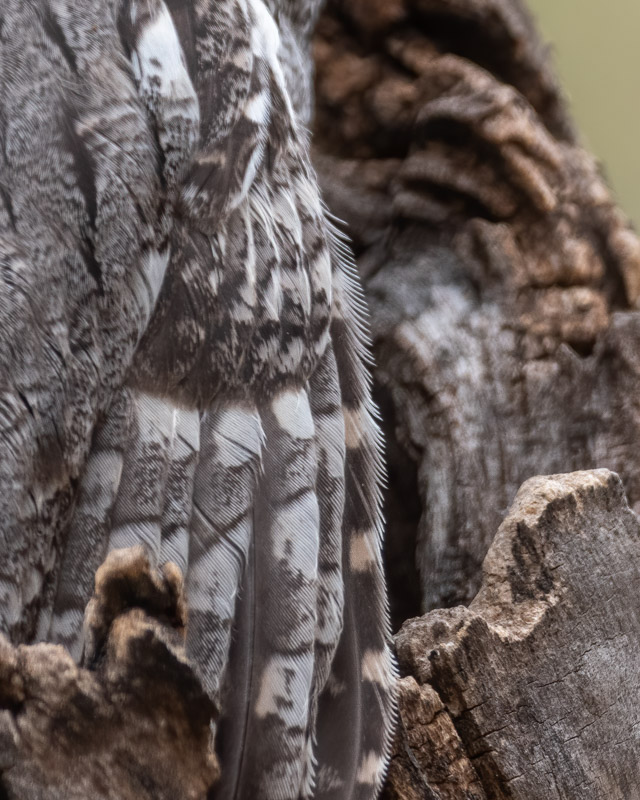
I hope to have many more photos of the Western Screech Owl as we move through breeding season. If any of you notice breeding behavior of owls in your own yards and would like to share it with me, PM (private message) me and I would be happy to come over.
